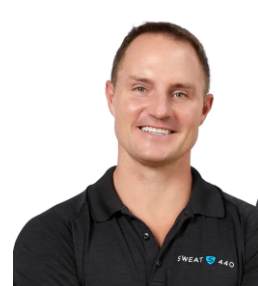Fitness in Flux: How 2024 Redefined & Set the Stage for 2025

As consumer demands shift, 2024 is laying the groundwork for a more innovative and personalized fitness landscape in 2025
The fitness industry has navigated a tumultuous few years marked by uncertainty and constant pivots. Over the past 12 months, it’s seemingly entered what could be called a “new normal.” Members returned in increasing numbers — sometimes in droves — but with fundamentally shifted expectations.
Armed with a fresh perspective on health and wellness, today’s consumers demand more than what the industry has traditionally offered. The fitness landscape has been reshaped by these evolving needs, challenging operators to adapt in ways never seen before.
At the same time, the rapid evolution of technology and the rise of AI are revolutionizing the way businesses operate. And while these advancements present opportunities, they also bring new complexities and uncertainties for an industry already in flux.
To gain insight into this evolving environment, Athletech News spoke with three seasoned industry professionals – Matt Wright, VP of growth and development at Healthtrax Fitness & Wellness, Mark Fisher, owner of NYC’s Mark Fisher Fitness and Business for Unicorns and Cody Patrick, CEO of Sweat440. Together, they share their perspectives from the frontlines, shedding light on where the industry stands today and how 2025 may unfold.



The State of the Industry in 2024
When asked how they would describe the state of the industry, and if they consider 2024 a “comeback year” post-pandemic, these pros had some similar thoughts.
“There has been an upward trajectory, and it was a solid year, but I’m not sure I would describe it as a comeback year from COVID,” said Fisher.
Wright takes it one step further, saying, “We can’t compare it to pre-COVID times. People are coming back with a much more holistic focus — looking for mental health support, recovery and community, not just fitness. At the same time, we’re seeing a new generation of health-conscious individuals, as well as fewer ‘donators,’ the people who join and never show up.”
Patrick also observed continued growth throughout the year but pointed out seasonal dips. “2023 was more of the comeback year. 2024, for us, was a continuation of that growth,” he said. “While we saw ebbs and flows due to summer vacations and election-related spending slowdowns, overall, the trajectory has been positive.”

Key Trends in Fitness
Recovery continues to be the focus across the industry. Wright explained how this has shaped his approach.
“We’ve piloted cold plunges, added cryo beds, and invested in saunas and steam rooms,” he said. “These features are increasingly in demand, and we’re working to meet members’ needs strategically.”
Fisher echoed this trend while pointing to the emergence of recovery-focused studio brands. “I’m particularly interested in concepts like Othership, a chic ‘class-style’ spa, and Sweathouz (SWTHZ), an infrared sauna and cold plunge franchise,” he said. “However, further, questions remain as to whether this will be a trend with softening demand, or if this will become a permanent tentpole of consumer wellness behavior.”
For Patrick, he has been testing the waters at Sweat440. “We’re incorporating recovery lounges with compression and percussion therapies in some of our studios,” he shared. “This is a focus for the brand to test and implement throughout 2025.”
Strength training is also on the rise, according to Patrick. “We’ve always had a strong strength component, but we’ve increased it even more to meet demand,” he says. “Gamification has also become a key motivator for members, and we are seeing that as a significant motivator.”
Wright agreed, noting the impact of personal training. “Personal training departments are thriving, especially with the Boomer population wanting to stay healthy and active. People want to exercise more efficiently, so they’re hiring fitness professionals. It’s a shift toward a more personalized and guided fitness experience.”

The Role of Artificial Intelligence
Artificial intelligence (AI) continues to be a hot topic across industries, including fitness.
Patrick shared how AI is transforming their member’s journey. “While the core workouts aren’t really impacted by this, the customer journey and interaction most certainly are,” he explains. “We are looking to AI to optimize everything from customer communication to data analysis and predictive modeling.”
Meanwhile, Wright uses AI for optimization. “I see it as an assistant,” he explained. “It helps us optimize marketing, analyze brand performance, and allocate resources more effectively. But it will never replace the human touch or the need for personalization in fitness.”
Fisher offered a more tempered perspective. “I think much of the AI application in the gym space has been somewhat overhyped,” he said. “Yes, tools like ChatGPT can save time on content creation, but they still require a human touch to avoid sounding generic. Having said that, it’s fast-moving waters. With the sophistication increasing at breakneck speed, I anticipate we’ll continue to see booking and billing platforms integrate AI to provide insights to owners. And ideally, owners can use this deeper and more personalized understanding of behavior to drive more utilization and improve retention.”
Wellness, Longevity & Integration with Healthcare
As the focus on wellness and longevity grows, fitness operators are finding ways to adapt. Wright highlighted Healthtrax’s partnerships with healthcare providers.
“We’ve partnered with hospitals to create a seamless transition from physical therapy to the gym,” he said. “We are also plugged into medical weight loss initiatives and work with individuals to teach the importance of strength training and maintaining healthy eating habits. This affiliation with hospitals has been a big differentiator for us.”
Fisher pointed to the potential for gyms to play a larger role in personalized wellness. “As we head into 2025, the most competitive gyms and studios will win by supporting their members in the other 23 hours of the day,” he said. “Simply providing access to workouts is going to be more commoditized, as taking care of your health and fitness requires more than just workouts. Whether that’s through add-on or integrated coaching services, the best performing gyms and studios will provide holistic coaching and serve as case workers who can connect clients and members with other resources.”

Challenges & Opportunities in 2025
As 2025 approaches, Patrick underscored the challenges of a saturated market.
“The challenge is cutting through the noise to show what makes you unique,” he said. “Clear differentiators and meaningful engagement will be key.”
Fisher remained optimistic about the future while acknowledging the competitive landscape.
“Consumer spending on fitness is growing, but it’s also getting more sophisticated,” he said. “From franchises to mom-and-pop independents, as the players improve, competition increases. For instance, in our corner of the market, small group personal training gyms have seen a modest but significant tick up in monthly churn over the last 2 years. To be clear, the class/session experience will still matter. But building relationships and coaching clients to results will command a premium and be the linchpin of retention.”
Wright offered another perspective, emphasizing the importance of innovation and team investment. “The opportunity for fitness operators is to invest in their teams — time off, benefits, 401(k)s, spousal support, resources for challenges and pay,” he said. “The reason we have turnover is we miss the opportunity to take care of team members.”
In the end, these pros agree that it ultimately boils down to servicing people, and their health needs, with Fisher saying, “The best-performing gyms and studios will focus on building relationships, providing holistic coaching, and integrating health and wellness into their offerings.”



